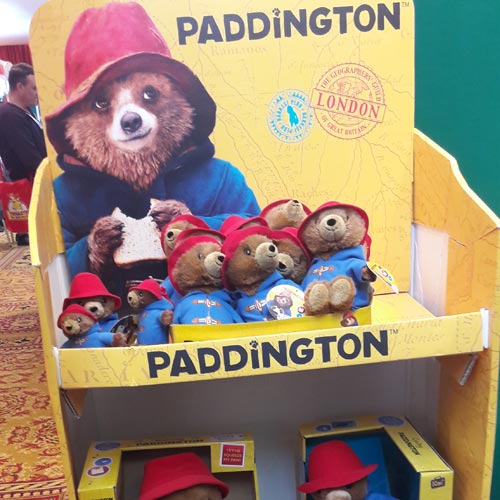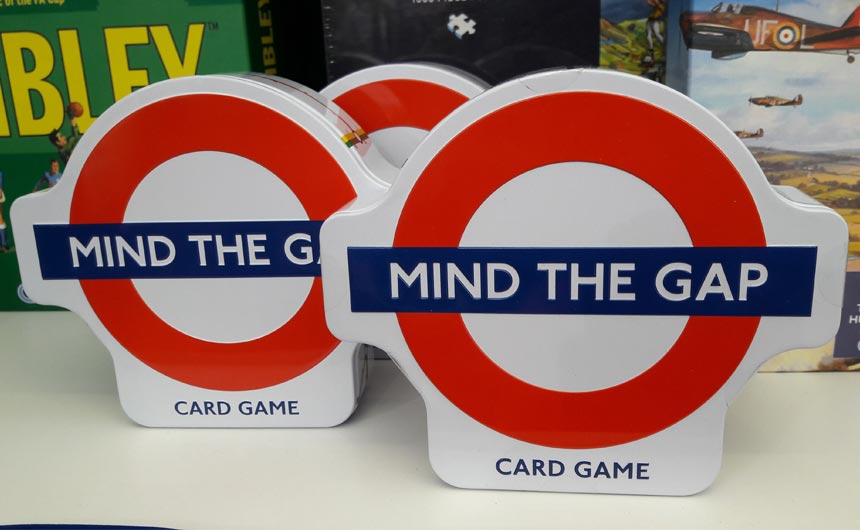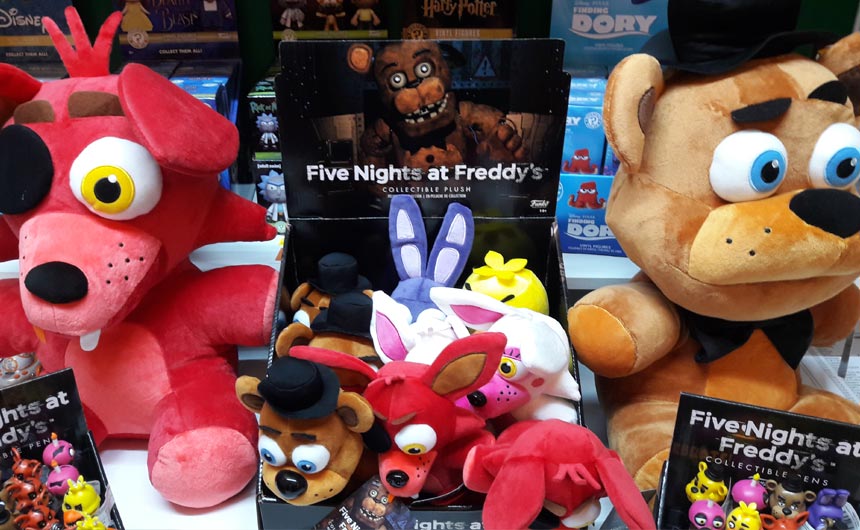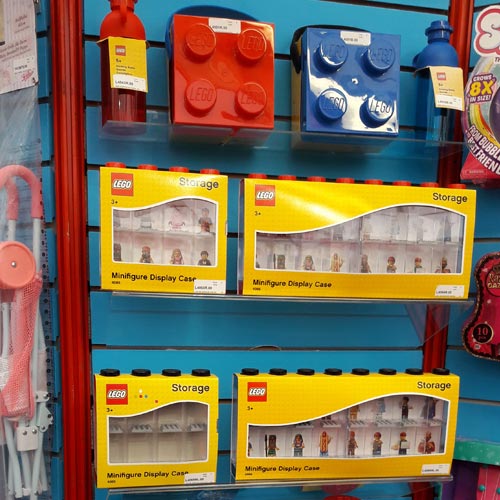Start Licensing’s Ian Downes heads to Harrogate to check out the Toymaster show.
I have been at the Toymaster show in Harrogate this week. Turning all Alan Whicker for a moment, Harrogate is a lovely town and must be a contender for the most charming trade show location. I was pleased to have the chance to visit it again. Some of you might have to Google Alan Whicker I have just realised!
Toymaster’s show is produced for Toymaster members and is attended by a range of toy trade suppliers. I think the Toymaster estate covers c250 stores these days focused mainly on high street locations.The shops are part of the community they serve. This is reflected in the tone of the show – it has a family feel to it. Attendees come to look at product, meet suppliers and importantly place orders. It is a show that supplier sales teams get to sell at and write real orders.
Exhibitors are broadly speaking treated equitably with similar stand space operating on a shell scheme model with their toys doing the selling for them. The show snakes around a warren of rooms at the Majestic Hotel, but manages to maintain a consistent brand feel and a positive atmosphere. There didn’t appear to be any quiet spots or exhibition cul de sacs.
It is also a show that is a good reminder that licensing is not the only game in town and that licensing is viewed sceptically in some quarters. That said, the show recognises the value and potential of licensing. Toymaster’s members know their shops, customers and trade well. From that perspective they make their buying choices based on acquired experience. One concern they seem to have is the selling price of the toys they select – they are wary of being undercut by the larger retail chains. This concern can be acuter when considering a hot licence that appears in the majority of retailers.
It was interesting to hear the pros and cons of licensing in this context. It is easy for us as an industry to get complacent and form the view that everyone ‘gets’ licensing. They don’t. There is also the fact that it doesn’t suit all retailers or manufacturers. That said, I think there were some suppliers at the show who could enhance their portfolios by the strategic use of well chosen licences. Not all licences come with a handle with care sticker after all nor are they all targeting children or based on TV/film properties.
Some of the licensing highlights and trends I picked up at the show were:

An excellent range by Playmobil using the Ghostbusters licence. Licensing is a new departure for Playmobil. It is a strong brand in its own right, but I am guessing that it feels licensing can help it in new consumer acquisition and in certain retail settings – such as Toymaster shops. Its range is well developed and sits together well. It will appeal to a collector market, as well as impulse purchasers.
In the context of Toymaster stores, Playmobil is a great display item and a trusted brand. It had a Stay Puft display figure on its stand which proved an irresistible photo opportunity for many. Including me.

On the subject of in-store display, this is an area where licensing can help provide some strong ammunition and can help shift product when well used.
A good example of this was Rainbow Designs’ FSDU for Paddington. It creates instant impact, provides a focal point in-store and is a neat way of retailer’s dialling up a strong brand. The licensee is utilising a licence well and recognising that even strong brands need an additional push. When coupled with progressive NPD and good quality product it is a powerful combination.

Gibson’s is a long-term licensee. It knows licensing well and uses licences in a considered way. It integrates it well with the non- licensed ranges. However, it hasn’t stood still licensing wise. I have been very impressed by its use of brand and heritage properties moving puzzles from boxes to tins. This has helped create new selling opportunities with puzzles becoming more giftable.
Two great examples on the stand were a Pringles puzzle in its signature tube pack design and a London Underground product in a shaped roundel tin. It is good to see a licensee in a traditional category using licensing to help move the category on.

The Toymaster show was also a timely reminder that licences can arrive from different places and that it is important to be tuned into this.
Funko was offering a range of plush and collectables based on Five Nights at Freddy’s. This is a popular online game. One point here is that Funko has moved quickly on this which I think is important, but equally it will face a challenge in educating retail buyers about the property. It may not readily resonate with buyers, but that said Funko is a focused business which is, I am sure, recognised by suppliers as a ‘go to’ company for collectables. It is a trusted supplier. Showcasing such a strong range at the Toymaster show will help flag it up.
Funko has also extended its product range into new categories such as pencils with Funko style toppers. This should make it an even more attractive partner for rights holders.

Other noteworthy examples of licensed products from non traditional sources included a range of craft kits from Trends UK using the Haynes Manuals licence – a good link to technology and invention – and Cheatwell‘s 3D puzzle based on the Flying Scotsman. The heritage sector is becoming a good source of licences for the toy sector.
A further example was West Design’s Johanna Bashford art range based on her best selling colouring books. A development of this kind leverages a popular book series in a logical way – a great example of proximity licensing.

I also thought HTI‘s use of the LEGO brand was good. It has developed a storage and display range capitalising on the popularity of LEGO Collector Figures and the growth in collectors. From a Toymaster retailer point of view this must be an attractive product with a great opportunity to up-sell customers and also offer linked deals. A practical product which will appeal to collectors.
Finally, I decided to switch my lookout beacon off in the evening and in pursuit of a licensing free zone I left my hotel in search of dinner. I walked past a big hoarding announcing ‘Coming soon – the Gino D’Acampo restaurant’. So much for switching off.
The hoarding and Gino’s charming smile reminded me that licensing really does come in all shapes and sizes. At least I know where to go to dinner in Harrogate next year!
Ian Downes runs Start Licensing, an independent brand licensing agency. His Twitter handle is @startlicensing – he would welcome your suggestions for what to look out for.































